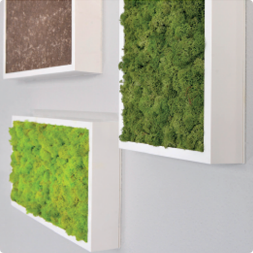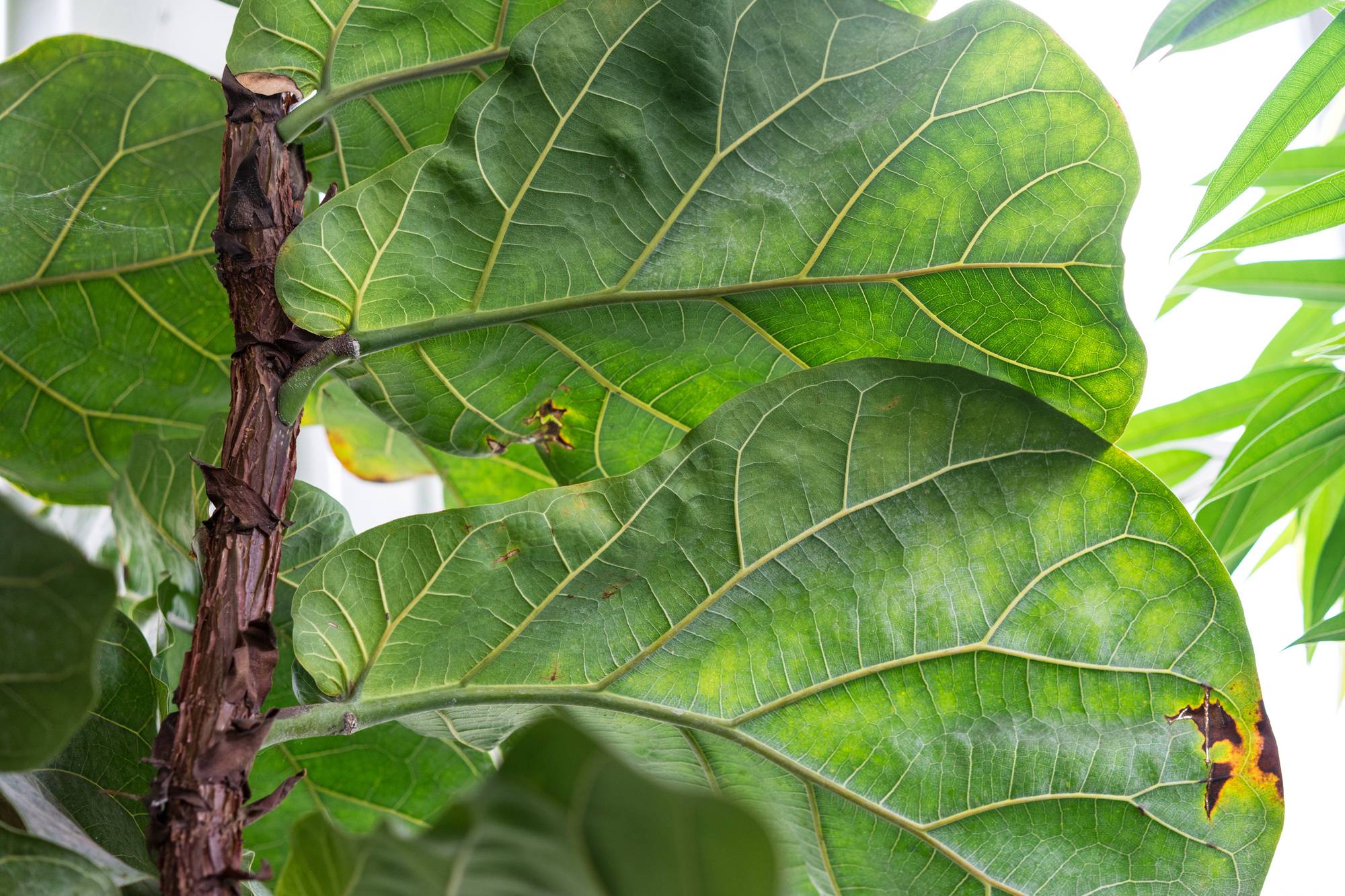Haven’t you heard the latest plant news?
The Ficus lyrata is having a moment in the spotlight. You might know the Ficus lyrata better by its other name – the fiddle leaf fig plant.
The plant is the must-have plant of every plant lover’s home. If you don’t already have one, you must be reading the wrong fashion mags and interior design blogs.
The fiddle leaf has featured in the New York Times and the House Beautiful magazine.
Everyone’s talking about the fiddle leaf fig plant. And yet, people know surprisingly little about this trendy fig tree. That’s why we thought we’d take this opportunity to shed some light on the plant.
For our ultimate history fo the Ficus lyrata, keep reading below!
1. The Root of the Matter
The story of the fiddle leaf fig plant starts along the West African coast. It’s been growing for the millions of years in the wild of several West African countries. A native species of Sierra Leone and Cameroon, the plant flourishes in the lowland tropical rainforest.
It’s part of the Moraceae family of plants. The Moraceae family also includes the mulberry and fig tree species, along with over 1000 other plant species. Therefore, the ficus lyrata has a lot of cousins (850 to be exact!).
2. Wild Thing?
Nowadays, we associate the fiddle leaf fig with a trendy houseplant for urban apartments. But behind the fashionista appearance lies a dark past in the wild.
The Ficus lyrata is what is known as a banyan fig tree (Ficus subgenus Urostigima). Instead of growing by itself, it grows from the top of the crown of another tree. Talk about invading personal space.
The seeds of the fiddle leaf fig tree land as right at the top of another tree competing for sunlight in the rainforest. By picking a spot so high up, the fiddle leaf fig tree gains access to high levels of sunlight.
After this, as the seed of the plant germinates, the roots of the fiddle leaf fig begin to wrap around the trunk of the other tree. This kind of plant is known as an epiphyte.
Then, over time the host tree is strangled by the roots of the fiddle leaf fig tree. Who said nature wasn’t violent?
But its growth of the fiddle leaf fig plant can also be peaceful. It doesn’t have to grow like this, but it’s also possible to grow free-standing. But in the competitive environment of the rainforest, it’s a plant-eat-plant world.
3. Why it’s the Fiddle?
Have you ever wondered why the Ficus lyrata is called the fiddle leaf fig plant? It’s obvious really. The plant gets its name from the violin-like shaped leaves that remind you of a fiddle.
The leaves can grow to be huge too. They measure up to 12 inches wide. And an impressive 30 inches in length.
Anyone who has a fiddle leaf fig plant in your living room will know the thickness of the leaves. Those large and leathery leaves have a distinctive dark green appearance.
As for the tree as a whole, there are numerous examples of the tree growing as tall as 60 feet high. To put that in perspective, 60 feet is approximately the entire length of a bowling lane standing upwards.
And right at the top, you’ll find the bright green fruit of the fig tree.
4. From Zero to Hero
But how do the fiddle leaf fig rise to become one of the most popular houseplants around?
According to one theory, the popularity of the fiddle leaf fig coincided with the launch of the social media platform, Pinterest in 2010.
Pinterest has become the go-to place for beautiful home design. And the fiddle leaf fig tree represents a beautiful photographing opportunity.
Nowadays, Pinterest has over 200 million regular monthly users. That’s thousands and thousands of people posting, sharing and looking at pictures of the ficus lyrata.
5. Jumping on the Bandwagon
Retailers spot a market for the fiddle leaf fig plant. Most notably, the Swedish furniture store, IKEA started stocking the plant in 2013.
While the IKEA version was only small. For a bargain at $13.99, you could have your very own fiddle leaf fig tree.
Since then, the price of fiddle leaf figs has shot up. You can now pay up to $100 for a larger tree.
It’s not easy to transport the larger versions of the plant. Which is why an increasing number of retailers are delivering the fiddle leaf figs to doorsteps.
6. No Longer Playing Second Fiddle
Every era has a houseplant that’s making waves. As we already established, the fiddle leaf fig tree wasn’t popular until the 21st century.
The African violet was certainly the houseplant of homes in the 1950s and 60s. By the 1970s, spider plants were spreading across the country. And, who doesn’t remember your mother’s ficus in the 1980s and 90s?
The award-winning TV show Mad Men, which told the story of the 1960s through the marketing, has gained a reputation for incredible accuracy in every respect.
None more so, when it comes with its depiction of houseplants. You’ll see monsteras, pothos and parlor palms, but you won’t spot a Ficus lyrata.
You can’t turn on your TV without seeing fiddle leaf fig plants on your screen.
Ok, that’s a slight exaggeration. But the plant has definitely received plenty of attention of late. It even featured on a number of Super Bowl commercials.
7. A Moment in the Sun
The history of Ficus lyrata goes back millions of years. But it’s moment in the sun has only just arrived.
It’s not hard to see why it’s been called the “The ‘It’ Plant of the Design World” but none other than the New York Times.
The fiddle leaf fig plant perfectly transforms a boring and dull room into a vibrant and stylish place. And yet, it nicely reflects the minimalist aesthetic by not overpowering its surroundings.
As one designer puts it, “you can plop it in a dead corner and suddenly everything comes to life”.
But for many people, the plant also evokes a science fiction or alien world with its glossy green leaves. According to the interior designer, Brad Sherman, the fiddle leaf fig plant has a “pre-historic, Dr. Seuss feel” to it.
Brad Sherman, an interior designer in New York, thinks they have a “prehistoric, Dr. Seuss feel.”
8. Growing Pains
The reason for the rise of this trendy tree is because it looks great. The popularity of the fiddle leaf fig tree is down to designers rather than gardeners. Therefore, the challenges of growing the fig plant are largely overlooked.
And yet, the fiddle leaf fig plant is notoriously really difficult to grow and maintain. Many plant lovers have discovered that the fiddle leaf fig plant dies in only a matter of weeks.
While many people have claimed that the plant is especially delicate and fragile. Sometimes, just moving it from one side of the room to the other can cause it damage.
As one fiddle leaf fig plant owner puts it, “they’re very emotional plants”.
This explains why the Gardenista blogger, Michelle Slatalla has referred to the fiddle leaf fig plant as “the houseplant equivalent of a newborn”.
That partly explains why there are probably more pictures on Instagram and Pinterest of the plant than there are actual fiddle leaf figs in people’s homes. People are scared of the challenge.
And yet, this might be exactly what attracts some people to the plant. As Slatalla adds, “people tend to anthropomorphize this plant in ways they don’t with others”.
As with any other trend and craze, millennials are usually the demographic group driving it. It’s the same with the ficus lyrata.
We’re also told that millennials are not having kids. Maybe the younger generations are fulfilling the need to care for someone else by buying a fiddle leaf fig plant.
9. How to Keep it Alive?
The fiddle leaf fig plant is a challenge for even the most experienced and committed gardeners.
The most effective way of making a success of your fiddle leaf fig tree is by replicating the conditions in which it’s familiar. Yes, the lowland rainforest of West Africa.
Only, most people’s apartments and houses represent starkly different conditions to this. The fiddle leaf fig may flourish in the dark, warm and wet, but modern-day human beings certainly don’t.
But you don’t have to give up. Many people have sought out tips and tricks to keep it strong and healthy.
A landscape designer in New Jersey, Hadley Peterson has a fiddle leaf fig tree that’s growing strong after more than 10 years.
She claims it’s all about the atmosphere and air. She says, “I keep my house at 68 degrees”. But the fiddle leaf fig plant also needs lots of sunlight to stay healthy.
Even though the fiddle leaf fig might be difficult to maintain for much more than a year. If it lasts up to a year, it’s a relatively affordable way of keeping your home bright and green.
10. Avoid Killing Your Fiddle Leaf Friend
There’s no easy solution to making sure your fiddle leaf friend lives a long and healthy life in your living room. But there are certain mistakes you need to make sure you avoid.
1. Watering the Fiddle Leaf
It’s difficult to balance to achieve. Both overwatering and underwatering the fiddle leaf fig tree can cause damage.
You have to replicate the rainforest conditions, in which the fiddle leaf fig gets plenty of water.
But the best way to do this is to concentrate on ensuring the soil is always moist without soaking the soil in water. You can even place the fiddle leaf fig in draining pot.
If you notice the top layer of the soil is becoming dry, it’s time to water. Keep watering until the water flows out of the bottom. When it gets dry again, repeat.
2. The Right Amount of Sunlight
What makes the fiddle leaf fig plant an ideal houseplant is that the natural light provided by the majority of homes is perfect. It’s often just the right amount.
You need to make sure the tree gets plenty of indirect light. And also, some direct sunlight also benefits the growth of the tree.
The most suitable place to position your fiddle leaf fig tree is at an east-facing window in your apartment. This allows it to avoid the strong afternoon sun from the south and west.
3. Eat it Right
Even though many members of the ficus family flourish in high levels of fertilizer, that’s not the case with the fiddle leaf fig plant.
You only need to fertilize the fiddle leaf a few times per year. Most importantly, in spring and summer months. You can also kill the fiddle leaf by overfeeding it.
4. Far Too Cold
What’s the temperature in the jungle of West Africa? Yes, it’s pretty warm. That’s the conditions you want to replicate in your apartment.
While your bank balance won’t thank you for the increase in energy bills, your fiddle leaf fig tree definitely will. However, even room temperature is usually warm enough for the tree. But make sure it’s out of the way of cold drafts during the colder months.
The Ficus Lyrata History
Now you know everything there is to know about the Ficus lyrata. You need to catch up with everyone else by buying your own fiddle leaf friend.
Are you interested in buying a fiddle leaf fig tree for your home? Check out our online store for more houseplants that would look great in your home. Or in get in touch with us today to find out more.



















